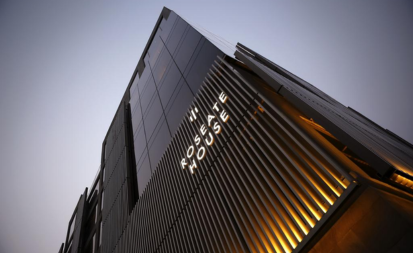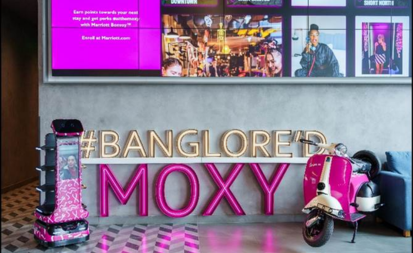Selling a Bottle of Wine is an Art
Soumyadeep Bhattacharya - Food and Beverage Manager, Holiday Inn Bengaluru Racecourse Major factors behind the growth of Wine tourism in India Wine tourism has been growing because of interest in wine in general. Additionally, in many cases,

Soumyadeep Bhattacharya – Food and Beverage Manager, Holiday Inn Bengaluru Racecourse
Major factors behind the growth of Wine tourism in India
Wine tourism has been growing because of interest in wine in general. Additionally, in many cases, government provides assistance to wine producers. The Resource Guide for start-up suggests that “as government officials have become aware of the wine industry’s potential to create economic opportunities in rural communities, they have increasingly supported initiatives such as plantings of vines, other capital investments and sales and marketing campaigns.
The ‘green’ tourist activities are gaining popularity due to increased interest in environmental issues. That is why agro- and eco-tourism have become a popular trend. India the three major wine producing regions are Maharashtra, Karnataka and Himachal Pradesh. Of these, Maharashtra is the largest producer and consumer of wine.
Sula Vineyards, which makes over a million cases a year, gets 350,000 visitors a year to its winery.
Major factors behind the growth of Wine tourism in India include
Rising disposable income of Indian consumers
Changing demography structure
Increasing exposure to western culture
Growth in the foreign tourists
Increasing women consumption
How has the placement/ demand of wine in Hotels changed over time?
India has grown as a wine consuming country over the years. Earlier wines were considered only for the niche and were only available in high end restaurants. Things have completely changed over time, especially with the Millennials’ and the GenZs’ rising interest in wines and thereby wines are now also sold in cans.
As wines are now slowly getting accepted by all types of guests, hotels have now stopped bombarding their wine lists with intimidating heavy bodied and complex old-world wines and have shifted focus to the new world wines such as Australian Shiraz, Sauvignon Blancs of New Zealand, Argentinian Malbecs etc. which are relatively easy on the palate and can be paired with most of the food on the menu.
As the markets are volatile, customers have also extremely become price sensitive and thereby pricing the wines right play a key role now.
Wine has become an essential part of the menu in today’s dining experience. What are the key factors in managing and serving the diners’ wine options?
A great wine menu, however, should be thoughtfully structured, priced according to some key factors, comprehensible and always put the guest first. Creativity is a plus but not always necessary.
Price Point Balance
There is a certain level of snobbery associated with wine, but it isn’t the case for no reason. There should always be at least a few great choices at all price points, and guests shouldn’t be priced out of ordering wine. There are a few exceptions to this ideology depending on the type of establishment (for example, a fine dining restaurant versus a casual Friday night spot), but overall, there should always be a balance of rare, special occasion bottlings and every day, approachable wines.
Understand Your Clientele
Thinking about what demographics make up the clientele and what part of city the restaurant is in informs how much and what type of wine to have. In a smaller market, going too niche can be your downfall, and there is a high chance of sitting on a lot of stagnant inventory for a long time.
Organization is Key
Organization can vary depending on your establishment’s clientele, but there are a few straightforward approaches that should always be considered. I personally like organizing my wine list by country first, then by body, and ascending by price. This approach is relatively standard and
easy to execute. Organizing by country gives an idea of flavour and style, and body helps guests with both food pairing options and general preference. Price makes it easy for them to order within their means.
Keep Food Pairings in Mind
At a restaurant, I think that it is super important to consider the menu and choose wines that complement the food, as well as those that can be enjoyed on their own. Good wine menus are changed seasonally do that the wine list evolves to complement the seasonal ingredients.
Remove the Ego
You’d be surprised at the number of wine menus that are unfortunately affected by egotistical decisions. If the wine doesn’t move, then it comes off as a reflection of ego as opposed to a list curated for guests. Generally speaking, a wine list should serve many purposes, but one of the most important ones is to make guests comfortable drinking wine. Never buy wines for ego that won’t sell because, after all, we have a business to run.
How is wine at your brand (Hotel, restaurant or airline) playing an essential role in customer experience?
Wine has the unique ability to elevate the guest experience, enhance your menu, and boost your alcohol sales.
Selling a bottle of wine is an art, the waiter/wine sommelier needs to have in-depth knowledge about the wine, its origin, its maker, etc. One needs to be a storyteller and should possess great communication skills to transport the imaginations of the guests from the restaurant to the vineyard by his/her storytelling skills.
Some great conversations can be initiated by the wait staff while selling and serving a bottle. Moreover serving the wine also requires some finesse and style right from presenting the label, opening, decanting, presenting the cork etc. which also add to the overall customer experience
—-
 English
English French
French German
German Italian
Italian




